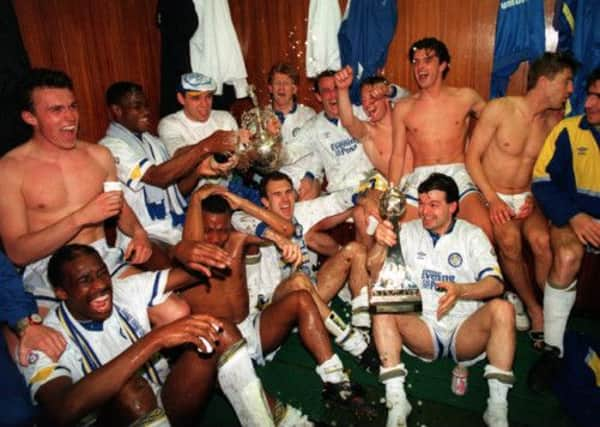Long battle to establish lasting foothold over rugby is won


The reason was simple. Rugby ruled, with the Aire, Calder and Colne Valleys all joining the north bank of the Humber in acting as a barrier to the sweeping tide of football fever.
Various attempts to break the stranglehold had been made. The Sheffield FA, for instance, staged an exhibition match in Leeds as long ago as 1877 but the locals showed little interest.
Advertisement
Hide AdAdvertisement
Hide AdA similar response met the staging of an FA Cup semi-final at Fartown, Huddersfield, five years later.
Rugby’s great split of 1895 as 22 clubs resigned from the RFU to set up the Northern Union merely cemented the popularity of what later became known as rugby league with any Challenge Cup final staged at Headingley proving particularly popular.
The 32,507 crowd that watched Halifax beat Salford in 1903 proved, however, to be the high point with that year seeing football begin the process of storming the West Riding rugby strongholds. By 1912, just 15,271 were present at Headingley to watch Dewsbury beat Oldham.
Manningham, founder members of the Northern Union, had been in financial trouble for some time when the suggestion was made to switch codes and form a football club. Bradford City were born and an audacious application made to join the Football League.
Advertisement
Hide AdAdvertisement
Hide AdBy now, the League was a 36-team competition split equally into two divisions. Bradford’s bid seemed the ultimate case of a club attempting to run before it could walk.
That may well have been the case. But what City had on their side was timing and the determination of the game’s authorities to firmly establish a foothold in the region.
The League had long since grown frustrated that major population centres such as Bradford, Hull, Huddersfield and Leeds were not represented when small towns such as Gainsborough and Glossop were.
Bradford’s application was approved by a landslide majority, Doncaster Rovers proving the unfortunate fall guys as the South Yorkshire club was booted out of the Second Division despite finishing third bottom. The barrier had been breached and within two years both Leeds City and Hull City had been accepted into the League.
Advertisement
Hide AdAdvertisement
Hide AdBradford Park Avenue (1908), Huddersfield Town (1910) and, later, Halifax Town (1921) followed suit and although there were teething troubles with crowds at both Leeds and Huddersfield initially being disappointing, rugby’s previous iron grip on the West and East Ridings had been broken for good.